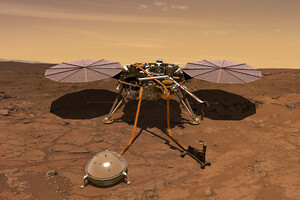The seismometer of the device will work a little longer than planned.

The InSight team decided to extend the seismometer of the station . But that means it will be able to use up the energy it needs faster, according to Phys.org. . The station was scheduled to shut down the seismometer, the last scientific instrument still in operation, by the end of June. This should save energy and allow the device to live until December.
Read also: Mars rover Perseverance found a piece of thermal blanket on the Red Planet
But experts have decided to continue the seismometer until the end of August, and possibly until September. As a result, its batteries will be discharged earlier, but will allow the seismometer to record additional marathon shots.
“InSight has not stopped telling us about Mars. We intend to obtain all possible scientific data before the landing module completes operations, “said Lori Glaze, director of NASA's Washington-based Planetary Science Division. which allowed them to measure the composition and depth of the Martian crust, mantle and nucleus. Using other tools, InSight recorded weather information, explored the soil under the landing module, and studied what was left of Mars' ancient magnetic field.
All scientific instruments of the station, except for the seismometer, have already been turned off. As with other spacecraft, InSight has a crash protection system that automatically puts it into safe mode in hazardous situations and disables all but the most important features. Low battery and temperatures below certain values can lead to a safe mode.
To continue the seismometer, the InSight team has disabled the fault protection system. Although this will allow the tool to work longer, the shutdown will not allow the device to protect itself from sudden situations and breakdowns that Earth engineers will not be able to fix.
Recall, the device has encountered technical difficulties on the Red Planet. Due to the large amount of dust on solar panels, it cannot generate enough energy to conduct research. Scientists believe the station could complete its mission within a year.
InSight landed on Mars on November 26, 2018. The spacecraft was expected to drill into Martian soil, but after two years of failed attempts NASA has decided to abandon this.




